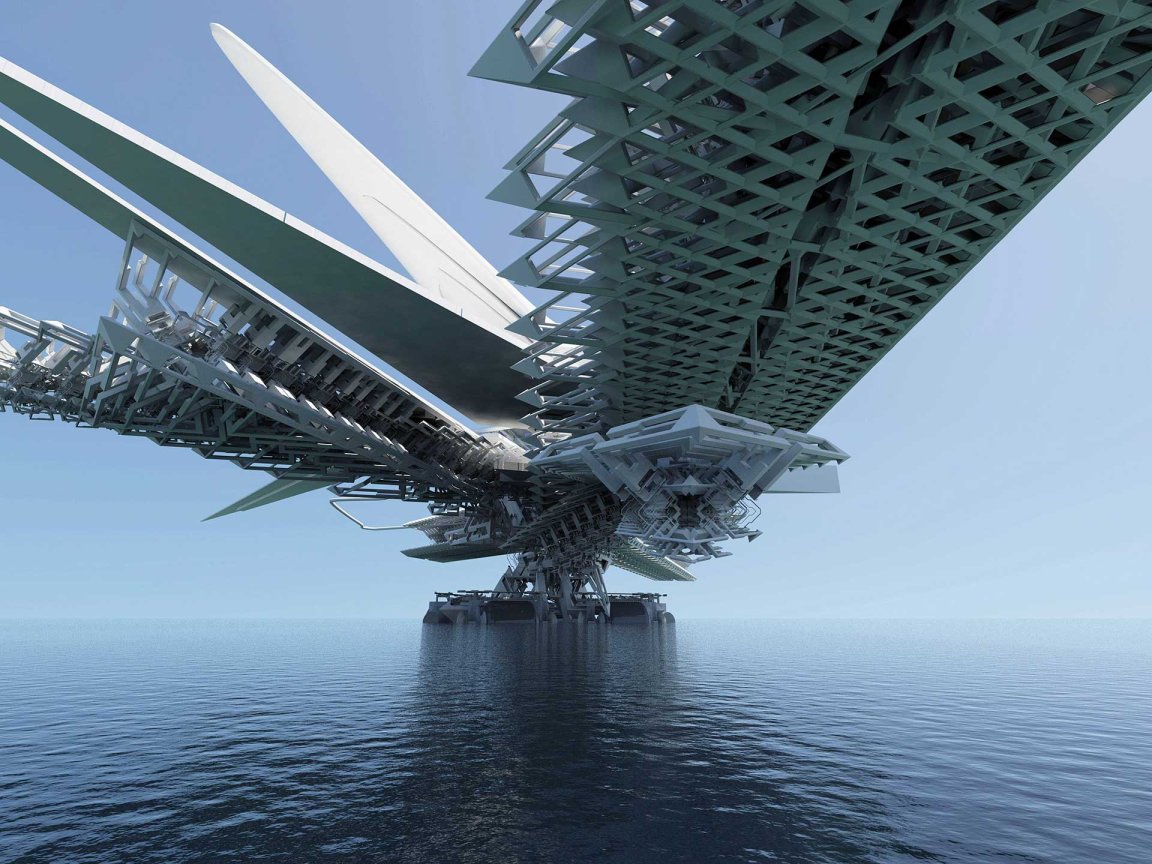
Building Innovation
Science fiction is full of intriguing structures, from floating cities to organic megastructures that often make us wonder if these types of “buildings” could be feasible in our world. These futuristic structures have often inspired today’s architects to push the boundaries of both materials and technology. Often, these architects create both beautiful and interesting designs like the newly created moving sail bridge concept by Margot Krasojević.
Commissioned by the city of Ordos in Mongolia — which is known for its elaborate government projects — Krasojević’s bridge is an impressive bit of architecture designed as a potential bridge for the Wulanmulun River. The design concept is a floating bridge that folds, making it possible to move it either by rowing or by sail to wherever it would be needed.

Its three expandable walkways and carbon fiber triple sail make it look like it belongs to some dystopian future, or as New Atlas reports, like a dragonfly transformer. To complete the futuristic feel, the bridge’s walkways are lined with solar panels which make the structure capable of generating its own power.
Transforming Architecture
This floating bridge is one example of transforming structures. A similar concept features a transforming home, capable of changing shape depending on the weather. Structures like these challenge today’s notion of what makes good design. Not only are these structures futuristic, they will also help to make the future more efficient and green.

Advances in engineering, technologies, as well as the availability of materials previously unheard of increases the chances that such structures might actually be built. For example, it’s now possible to build a house or an office using just a 3D-printer — bringing projects like Dubai’s 3D-printed skyscraper closer to reality.
Other ideas include a drone-flying house, a house with walls and floors made of “malleable skin” that transforms using an app, and DARPA’s concept of a self-repairing house. There’s also the concept of a “sea tree,” an artificially built wildlife skyscraper. However, there are designs, like the floating skyscraper concept, are too dangerous to come to fruition.

Whether this floating bridge and other futuristic structure concepts will ever be built or not, one thing seems clear: the future of architecture isn’t static. These moveable and transforming structures might just be what the cities of the future need.